The eastern indigo snake is a non-venomous snake with a blue-black dorsal and lateral scales.
Eastern indigos are native to southeastern regions in the United States, including Florida and southern Georgia. These snakes are common in sandhill habitats, cane fields, and other dry and warm locations.
With their passive personalities, eastern indigo snakes are easy to care for. These snakes are considered to be the longest smooth skin snakes in America, so you’ll need a big enclosure.
Eastern Indigo Snake Overview
| Common Name: | Eastern indigo snake, blue indigo snake, blue bull snake, blue gopher snake |
| Scientific Name: | Drymarchon couperin |
| Natural Habitat: | Cane fields, sandy soils or hills, dry glades, flatwoods, and stream bottoms in southeastern regions of the United States. |
| Adult Size: | 8.5 feet (males), 6.5 feet (females) |
| Average Lifespan: | 20–26 years in captivity |
| Diet: | Carnivorous |
| Housing: | 6 x 3 x 2 feet enclosure, 70–78°F, 85°F for basking |
| Experience level: | Intermediate |
Origin
The eastern indigo snake (drymarchon couperin) is native to southeastern regions in the United States, including Georgia, Florida, and southeastern Mississippi. These snakes are commonly found in dry glades, stream bottoms, sandy soils, and sandy hills.
The eastern indigo snake’s natural habitat varies from season to season. In the winter, eastern indigo snakes will hide out in the burrows of gopher tortoises, and in the summer, eastern indigos reside near wetlands.
In 1978, eastern indigo snakes were listed as a threatened species in the Endangered Species Act. Over-collection caused a decline in eastern indigos in the wild, and today, only captive-bred snakes can be sold.
Appearance and Behavior
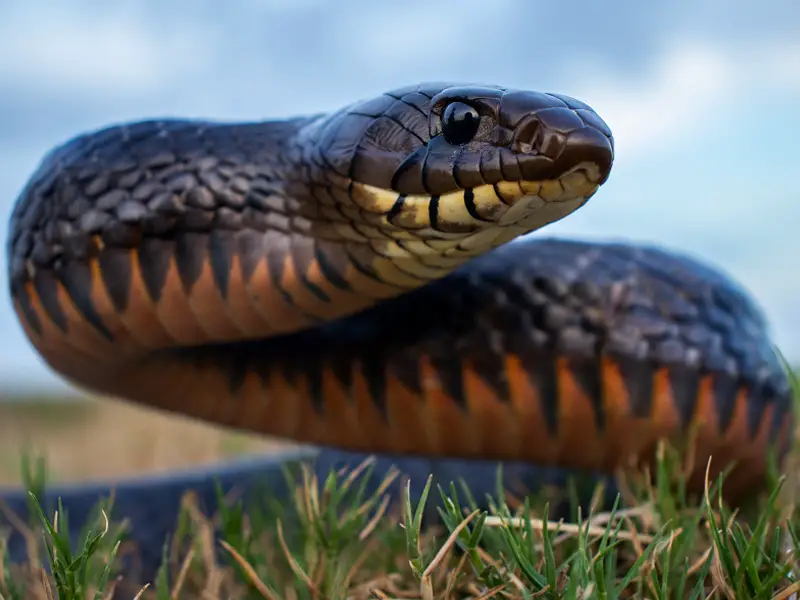
Eastern indigo snakes have lateral scales and a blue-black dorsal. These snakes also have reddish-orange patterning around their throats, cheeks, and chins.
From a distance, the eastern indigo snake looks a solid black color, but up close and in sunlight, the skin’s blueish tones can be seen. Males and females have the same markings and colorings, which makes sexing these snakes difficult.
Size and Lifespan
Male eastern indigo snakes are bigger than females. Males can grow to 8.5 feet long, while females usually grow to 6.5 feet long.
Males and females have an average lifespan of 26 years in captivity. However, in the wild, eastern indigo snakes are likely to live shorter lives than captive snakes and have a life expectancy of just 11 years.
Temperament
Eastern indigo snakes have a laid-back temperament and enjoy being active. It’s rare for eastern indigo snakes to behave aggressively, but if they feel threatened, these snakes may hiss loudly, flatten their necks, and vibrate their tails.
You can house two eastern indigo snakes together as long as you provide enough room in the enclosure. Two snakes in confinement may become stressed, so monitor your snakes and separate the pair if you notice hissing, striking, appetite loss, or regurgitation.
Eastern indigo snakes are gentle giants that don’t mind being handled with care. These snakes are non-venomous, making them safe to hold.
Housing Eastern Indigo Snakes
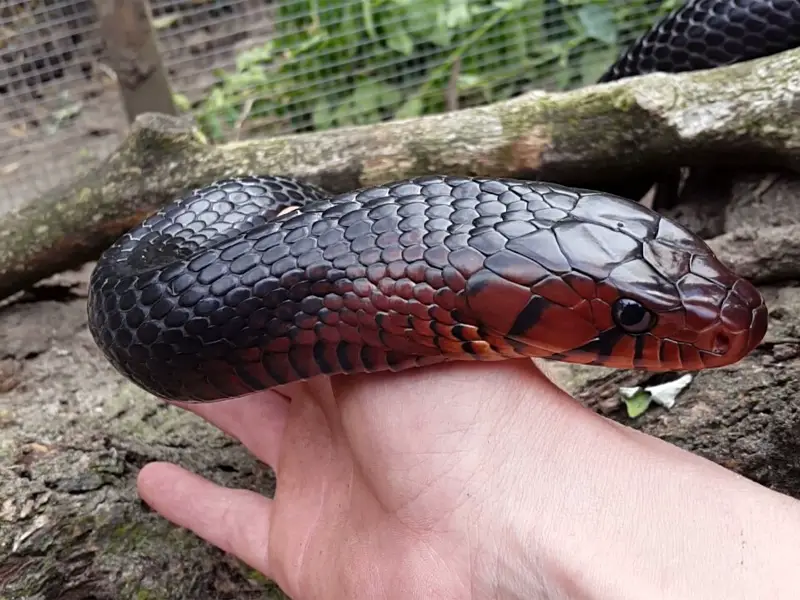
Eastern indigo snakes are used to exploring their habitat and are very active. These snakes don’t like being in confinement, so you should think about whether you can comfortably house an eastern indigo snake in a large tank before you buy one of these snakes.
You should try to replicate your eastern indigo snake’s natural environment in your enclosure. Because eastern indigo snakes love to burrow and hide, your tank should contain plenty of substrate and a box for your pet to take shelter. You should also add branches or logs to the enclosure for climbing.
Terrariums and vivarium are both good tank types for an eastern indigo snake.
Enclosure size
Hatchling eastern indigo snakes will be fine in a well-ventilated plastic tub. As your snake grows, so should the size of its enclosure. A 6-month-old eastern indigo snake needs an enclosure size of 2 x 1 x 1feet. Adult eastern indigo snakes need a 6 x 3 x 2feet enclosure.
Make sure your enclosure has enough height for your eastern indigo snake to climb.
Lighting
Eastern indigo snakes don’t have specific lighting requirements. However, you should use lighting in your eastern indigo snake’s enclosure to mimic day and night.
If you’re housing your snake inside, place the enclosure in a room with a window to give your snake enough natural light. UVA or UVB lighting isn’t necessary as this lighting can encourage your eastern indigo snake to be more active.
Temperature and Humidity
Your eastern indigo snake’s enclosure should have a temperature of between 70 and 78°F. Eastern indigo snakes don’t require hot temperatures, but you should still provide a basking area of about 85°F.
Areas with different temperatures inside the enclosure will allow your snake to regulate its body temperature. Your snake will need to cool off in a shaded spot away from the heat after basking.
Providing temperature variations is easy in large tanks. To make sure temperatures are correct, use a thermometer to measure the temperature of the tank and the basking area.
Humidity is not an important factor for eastern indigo snakes. A damp hide box will provide enough humidity without having to use a sprayer, fogger, or humidifier.
Eastern indigo snakes shed four to six times per year. You should mist your snake daily before shedding to ensure the snake’s outer skin doesn’t get dry because dry skin makes shedding more difficult.
Substrate and Decoration
Eastern indigo snakes don’t favor a particular substrate, so your choice of substrate will come down to personal preference.
Basic substrate materials like paper towels and newspapers work well. These substrates can be easily cleaned and reused or replaced during cleaning. However, these materials aren’t the best for burrowing.
Naturalistic substrate options include cypress mulch, coconut fiber, and aspen. These substrates will work well and are the best options for an eastern indigo snake.
You should decorate your snake’s enclosure with plenty of opportunities for climbing, burrowing, and hiding. Heavily furnish the enclosure with branches, water bowls, and hideouts. Your snake should have access to a dry area, a warm area, and a wet area.
A hide box filled with damp sphagnum moss is a good decorative choice. You can make your own hide box from a plastic storage container with a hole cut out of the lid. Make sure the edges are round so that your snake doesn’t injure itself.
Branches and logs are essential for claiming. Snake-safe plants like elephant trees, climbing aloe, and ponytail palms are all good choices for your enclosure.
Cleaning
Eastern indigo snakes frequently release watery waste, and persistent tank cleaning is important to reduce bacteria build-up and avoid bad smells.
Spot-clean the enclosure at least once a day, removing waste and replacing substrate as needed. Remove and clean plants and decorations one at a time on rotation. Most items can be wiped down with warm water and soap.
Perform a deep clean of the enclosure every two or three months. During a deep clean, house your eastern indigo snake in a secure temporary enclosure.
Place a plant and a bowl of warm water in the container to allow your snake to relax and soak while you clean. Moving enclosures can be stressful for snakes, and your eastern indigo snake will feel calmer in a familiar environment.
Use hot water and dish soap to wipe down the entire enclosure, then leave the enclosure to dry. Deep cleaning will target areas that you can’t reach with a spot-clean, such as underneath the substrate and on the underside of plants.
If cleaning with water and dish soap is proving ineffective, use a 10% bleach solution to remove stubborn stains. Wipe down the area thoroughly and leave it to air out before your snake returns to the enclosure.
Eastern Indigo Snake Care
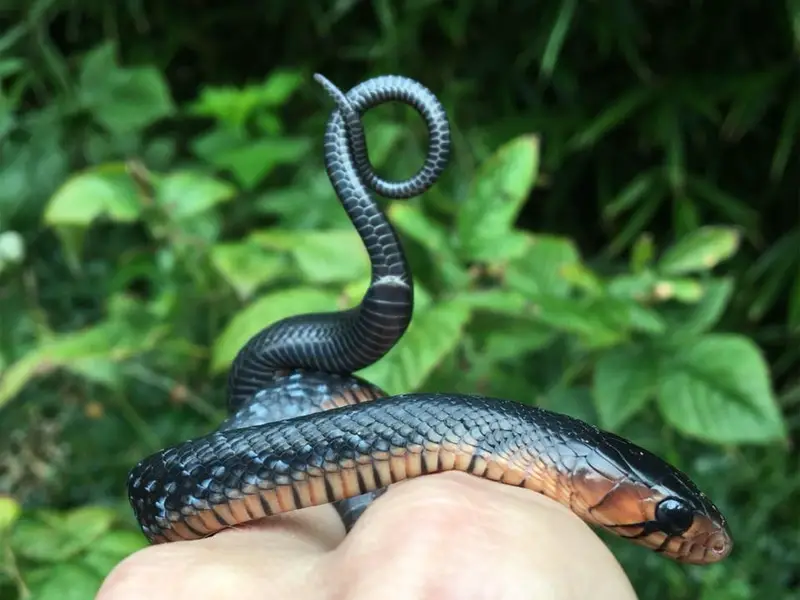
It’s easy to care for an eastern indigo snake. With enough food and water and a comfortable enclosure, your snake should live happily.
Food and Water
In the wild, eastern indigo snakes eat anything they have access to, including birds, small mammals, rodents, smaller snakes, and lizards. These snakes don’t constrict their prey. Instead, they use their jaws to crush their food before eating it.
You can feed your eastern indigo snake rodents, quail, rabbits, chicks, and feeder snakes. Look in your local reptile store for mealtime inspiration. Eastern indigo snakes will eat almost anything.
Pre-killed or frozen-thawed food is safest for eastern indigo snakes. If your snake attempts to catch live prey in its enclosed environment, the snake is likely to sustain injuries.
Eastern indigo snakes are active and have fast metabolisms. You should feed your snake every 7–10 days. These snakes can’t open their jaws as widely as other snakes, so you should make sure each meal is smaller than your snake’s girth.
Keep an eye on your snake’s weight and adjust feeding timings accordingly. Juvenile eastern indigo snakes can eat more food than adults because they often go through a fast growth stage. To lower the risk of obesity in an adult snake, you should feed your snake once a week.
Give your snake constant access to a source of clean water. Place a water bowl in your enclosure and replace the water daily. Eastern indigo snakes can sense when their water isn’t clean and won’t drink from stale water. To make sure your snake is properly hydrated, keep the water in your enclosure as fresh as possible.
Handling
Eastern indigo snakes are friendly and can be handled with care. However, because these snakes are large and heavy, they can be tricky to handle.
Make sure your snake is accustomed to your presence before you attempt handling. Establish a relationship with your snake during weekly feeding sessions. Open the enclosure and place your hand on the substrate twice per day. This will get the snake used to your scent.
Before handling your snake, wash your hands to remove the scent of food, which could incite your snake to bite. If your snake hisses, flattens its neck, or vibrates its tail, stop and come back another time. These are signs that your snake is stressed. It’s better to handle a sleepy snake.
Use both hands to pick up your snake. Hold one hand under the last quarter of your snake and another hand one-third of the way down the snake’s body. This will support your snake’s whole body. Let your snake adjust its positioning and get comfortable.
Handle your eastern indigo snake for a maximum of 15 minutes per day. Monitor your snake’s individual temperament. Some snakes don’t mind being handled, while others would rather be left alone.
Common Health Issues
Eastern indigo snakes are susceptible to a number of common health issues, including:
Respiratory Issues
Respiratory problems like pneumonia are caused by setting the wrong temperatures and humidity levels in the enclosure. Eastern indigo snakes need dry environments without excess moisture, except when they’re shedding.
Look for nasal discharge as an indication of respiratory problems. Take your snake to an exotic vet if you notice nasal discharge. Oral or injective antibiotics may be prescribed.
Blister Disease
A damp or wet substrate will increase your eastern indigo snake’s risk of skin conditions, including blister disease.
Observe your snake’s skin carefully during handling. Treat blisters with snake-friendly ointments or visit your vet for antibiotics. You should also sanitize your snake’s housing and replace the substrate with dry material before returning your snake.
Parasites
Parasitic infections are more likely to occur in snakes living in poorly-ventilated or unsecured enclosures. Various treatment methods are available depending on the type of parasitic infection.
Parasites thrive in unhygienic environments. You can prevent parasite infestations by cleaning your snake’s enclosure regularly and by removing waste every day.
Anorexia
Eastern indigo snakes are particular with their environment and may refuse to eat if their living conditions aren’t right.
Usually, anorexia can be resolved by adjusting the temperature of your enclosure. Your snake will also stop eating when it is about to shed its skin. Wait until shedding is complete before you feed your snake again.
If your snake’s enclosure environment is optimal and your snake still isn’t eating, seek medical attention.
Breeding
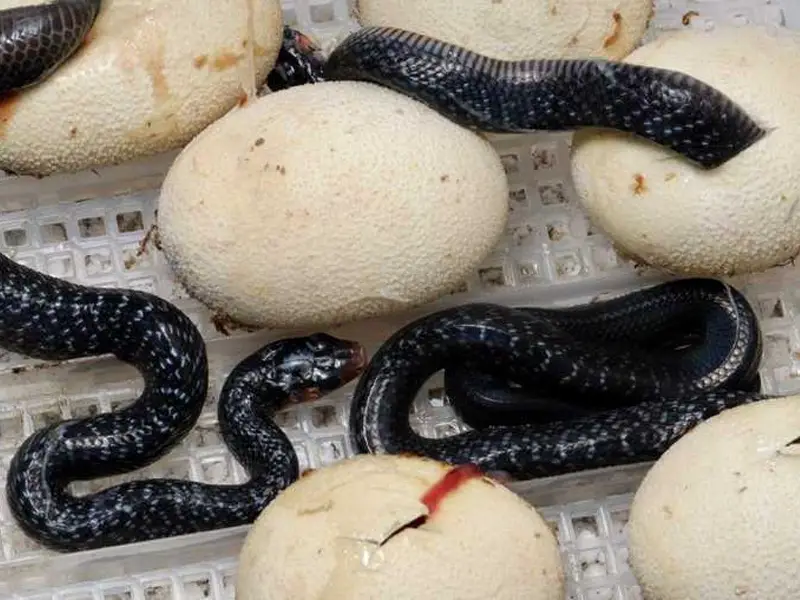
When most snakes are hibernating, wild eastern indigo snakes breed in the winter between October and February, when the temperature is 50 to 60°F.
In captivity, males will attempt to copulate with an ovulating female, regardless of the season — but only if the female is ovulating. Females release a pheromone during ovulation. Males are sensitive to this scent and will track the ovulating female.
To encourage female ovulation, mimic winter lighting with a decreasing day length. Winter days in an eastern indigo snake’s natural environment have about 11 hours of daylight. Reduce your daylight hours by closing the curtains in the room where the enclosure is located, or by using artificial lighting. Alternatively, wait until late November or December, when daylight hours will increase naturally, to breed your snakes.
Choose a large female and a healthy male to breed. Introduce the snakes in a separate enclosure and look for signs of stress or aggression. If you notice any of these signs, remove the female immediately.
After breeding, females will lay up to 12 large eggs over a four-month period. Incubate the eggs in temperatures of 72 to 75°F. The eggs will hatch after about 90 days. The babies will take up to two days to leave the eggs after hatching.
Choosing and Buying an Eastern Indigo Snake
The average cost of an eastern indigo snake is between $300–$500. Adult snakes cost around $800–$1,000. Adult eastern indigo snakes are more expensive than babies because they don’t need to be reared or readied for breeding.
Eastern indigo snakes are endangered and aren’t commonly available. However, you can still buy an eastern indigo snake in captivity. You will need to properly document your purchase. You will also need a permit because the eastern indigo snake is a protected species.
If you live in Florida, South Carolina, or Alabama, you might find eastern indigo snakes available at your local pet shops. Otherwise, you can find these snakes for sale online. Make sure to buy from a reputable breeder who has the necessary selling documents.
Before buying an eastern indigo snake, check the snake for bruises, scratches, lethargy, or any other sign of illness. This suggests the snake has been cared for improperly. Some breeders illegally capture and sell wild eastern indigo snakes. Don’t buy an eastern indigo snake from a breeder that you can’t trust.

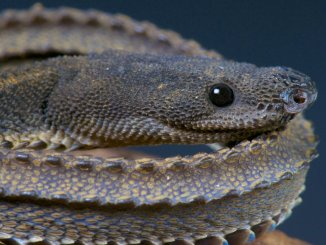
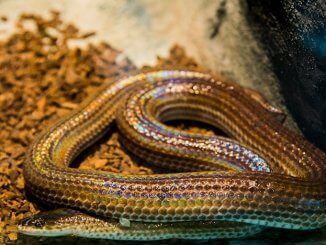
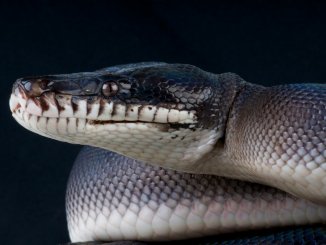
That’s funny reading the prices, they don’t sell for less than $1300 now!
The average cost of an eastern indigo snake is between $800-1200. Adult snakes cost around $1400–$1800.